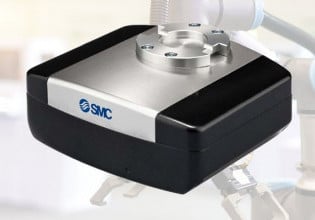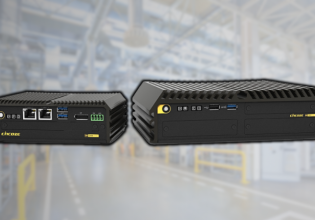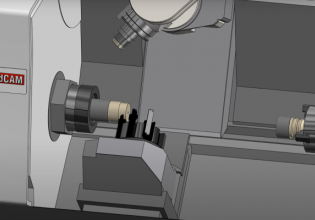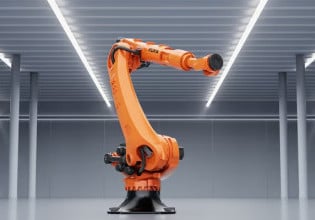3D Printing Failures in Manufacturing: Troubleshooting and Prevention
This two-part series will look at failures in additive manufacturing, how it happens, and what might prevent it from happening.
Understanding how things break gives engineers knowledge on how to improve the design. The greater failures are understood, the greater the next iteration. 3D printing or additive manufacturing is able to accelerate failures and iterations by making prototypes without the need for tooling.
It is important as 3D printing continues to move from prototype to production, designers are able to predict failure modes.
Traditional Failure Modes
I had an interesting conversation with the CEO of a 3D printing company. The CEO said he had just got off the phone with a company that broke one of his 3D printed parts. The company was angry and demanded to know how the CEO would make things right.
The CEO responded, “It broke, great! I assume you now see the stress concentration in the design. Once you’ve fixed that, I can print you another part without that defect in the design.”
At this time, the CEO showed me a CAD drawing of a manifold with a sharp 90-degree angle on the edge of a thin flange where the part would be mounted.
The thin geometry and sharp corner were right where forces would act on the part. This story reminds me that 3D printing, while a non-traditional process, doesn’t mean we can forget what we know about traditional failure modes and effect analysis (FMEA).

An example of a 3D printing failure. Image courtesy of All3DP.
When starting with additive design, material properties, geometries, stress concentrators, etc., are more about physics than the process used to build a part. Remember engineering fundamentals when starting any design.
There are enough challenges in 3D printing without having to worry about failure modes we are aware of.
3D Printing Failure Modes
One of the challenges to understanding failure in 3D printing is that building layer by layer can produce anisotropic or non-homogeneous parts. Processing metal layer by layer might change material properties or form inclusions.

Direct metal printing. Image courtesy of 3D Systems, Inc.
Additionally, part properties between powders, processes, and machines have shown a range of performance in similar parts. Even the amount or volume of parts in a build have been noted to have varying properties.
This might be due to heat history or thermal processes that can experience changes from layer to layer. While part orientation is important to material properties, in powder bed fusion processes, thermal stresses can be introduced to the part during the process. Controlling the temperature in the build space is important. Techniques have been documented where using the build tray or walls as a heat sink can help mitigate thermal stresses in parts.
Traditional Metallurgical processes have years of research that can create large pieces of metals with relatively predictable properties. Standards in 3D printing have helped provide a foundation to start, but more standards and testing are necessary.
According to a report published by NIST, “There are many standards development organizations (SDOs) currently active in AM standardization, including: ASTM international (committees: F42 additive manufacturing, E08 fatigue and fracture, E07 nondestructive testing, and F04 medical and surgical materials and devices), ISO (TC 261), SAE international, American Society of Mechanical Engineers (ASME, committee Y14.46), and American Welding Society (AWS, committee D20). In an effort to coordinate AM standardization efforts among multiple SDOs, America Makes and American National Standards Institute (ANSI) have formed the Additive Manufacturing Standardization Collaborative (AMSC).”
The report was based on a workshop between NIST and ASTM that identified seven needs to better understand the mechanical behavior of 3D printed components for critical applications.
- Comprehensive understanding of processing-structure-properties-performance (PSPP) relationships
- Mature process and material models
- Trustworthy in-process monitoring and control
- Effective non-destructive inspection (NDI) techniques
- Predictive design tools
- Traditional qualification framework
- Rapid qualification framework
During the NIST/ASTM event, there was a preference for powder bed fusion 3D printing processes. There are many characteristics, both in the powder and the process. According to the NIST/ASTM report, “Powder characteristics include morphology, particle size distribution, flowability, moisture content, effects from powder recycling, and chemical composition. Machine conditions and settings include many variables such as energy source power, beam scan speed, scan strategy, build atmosphere, drift in energy source power over time, and build atmosphere flow dynamics. Post-processing includes heat treatment, machining, electrochemical machining, chemical-mechanical polishing, shotpeening, laser-peening, anodization, chemical conversion (for coatings), and yielding/pre-stressing (i.e. autofrettage).”
3D Printing Processes
Much of the focus in metal 3D printing is on fatigue and crack propagation. Many 3D printing processes, such as powder bed, are not fully dense.
3D printed parts are more porous compared to some traditional processes like forging. This creates microvoids that lead to crack propagation, which means it might be possible for 3D printed parts to fail prematurely in high-cycle fatigue applications.
Post processes such as hot isostatic pressing (HIP) help to decrease voids, but the mechanical characteristics in high-cycle fatigue still need more testing.
Additionally, researchers and engineers need ways to monitor 3D printing in real-time during builds and more cost-effective non-destructive testing inspection methods.

Post-processing in 3D metal printing. Image courtesy of Protolabs.
As industry is asked to do more with less 3D printing can reduce materials waste, weight, the time between iterations, time to market, and more.
However, understanding failure modes is important to predict mechanical behavior and the overall lifecycle. These challenges are delaying the expansion of this process.
The current focus to better understand failure in metal 3D printed parts is layer orientation, process induced stresses, microvoids, crack propagation, and secondary processing. Part 2 will look at how companies plan to better understand with a full-digital thread, simulation, and real-time monitoring.






